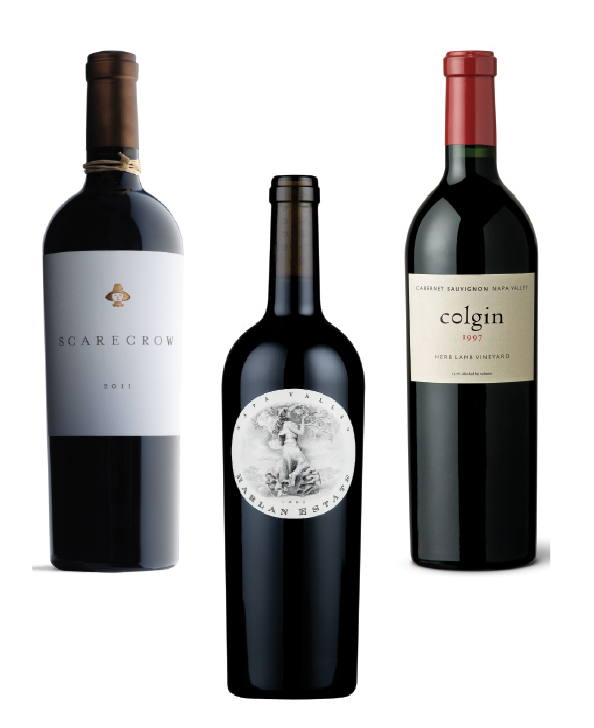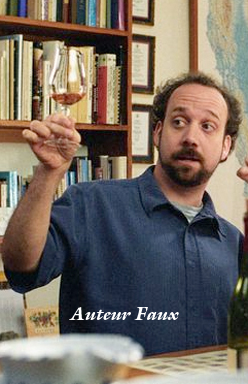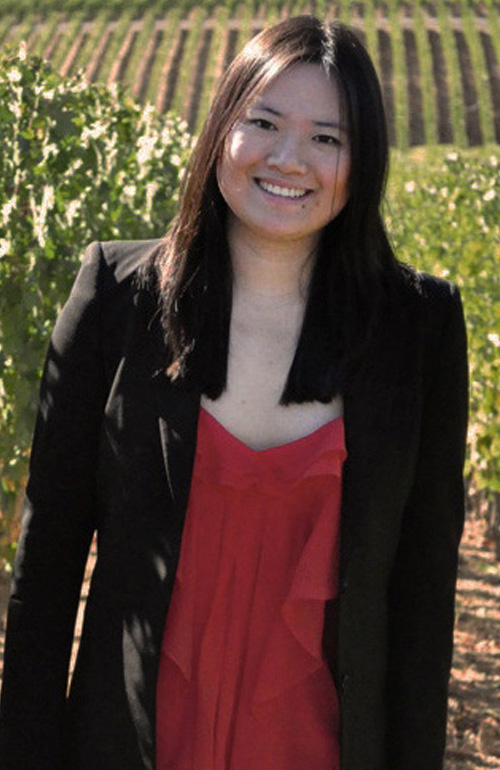While Your West Coast Oenophile still strives to maintain a 1:1 ratio of Resveratrol-to-Hemoglobin in my bloodstream, I also partake in a wide range of other alcoholic beverages from time-to-time, particularly at bars where the $16 Wine-by-the-Glass selection goes for $9.99 a bottle at BevMo and has been sitting, unpreserved, on the shelf since last Tuesday—know that none of this will ever happen at Sostevinobile! My tastes run from vodka and bourbon to tequila and scotch, with a refined mezcal or cognac or grappa doing the trick when I feel like being warmed up from the inside out. I am inordinately fond of single malts like Talisker or Oban and occasionally indulge in a dry martini, stirred not shaken (of late, the house variation at The Progress, with a touch of smoked Castelvetrano olive juice and rosemary oil, has been an especial favorite).
Of course, anyone who knows me will be aware that I am not content simply to indulge in others’ creations. Longtime readers of this blog will remember the Tai Da (太大) cocktail I concocted several years ago and introduced to a handful of bars in San Francisco. And for those with extremely long-term memories, there was the Fook Yu cocktail I created as a bartender at the legendary dim sum house on Clement Street. These days, I am pursuing the ultimate version of the venerable dark liquor equivalent of a martini, an atomic strength version I have dubbed The Manhattan Project. My quest still hinges on selecting the perfect handmade bitters to complement this recipe, along with exquisitely marinated cherries as a garnish. Without question, my vermouth of choice will be Quady’s VYA Sweet Vermouth, and the base liquor will naturally be the highest proof I can find. If I were a strict traditionalist, I would have to go with a rye—the Thomas H. Handy Sazerac Rye Whiskey being the strongest commercially-produced bottling I know, clocking in at 129.2°. But I have to defer to parent company Buffalo Trace ’s remarkable 144.1° bourbon, the George T. Stagg.
Speaking of cervids, the taxonomical family that encompasses moose, elk, antelope and deer, I had the pleasure of attending the first San Francisco trade tasting for the Stags Leap District. Of course, the feud between Warren Winiarski’s Stag’s Leap Wine Cellars and Carl Doumani’s Stags’ Leap Winery is the stuff of legend, and while neither retains ownership of the winery they founded, the trade association has chosen, collectively, to be grammatically apostate and eschew any employment of the apostrophe. A most politic decision.
But when wines of this caliber are being poured, remaining neutral is hardly possible. 18 of the most prominent producers from the District poured at Jardinière in San Francisco’s Civic Center, and despite several having been subsumed by the leading wine conglomerates over the years, nearly all the wines maintained a uniform excellence. As is my wont, I began my session with the one winery I had not previously encountered on Sostevinobile’s watch. Ilsley Vineyards has been furnishing a number of highly prestigious wine labels with grapes since 1962, but only started producing their own label this century. Lacking winemaking facilities or a tasting room, it is a property I have driven by on Silverado Trail numerous times but completely bypassed. Not to be overlooked at this event, however, was their approachable 2015 JK Sauvignon Blanc. Even more striking, the 2012 Cabernet Sauvignon Stags Leap District was an impressive introduction to their red line, but the true standout this afternoon was the 2013 Seis Primas, a Malbec-focused Meritage, with 33% Cabernet Sauvignon and 13% Merlot blended in.
Lindstrom Wines is a label I had only recently discovered; nor, before this tasting, had I met Carol Lindstrom, only her distributor. Still, reacquainting myself with these wines proved propitious. The 2013 Pinot Noir Dutton Ranch seemed, frankly, rather anomalous for this event, but easily held its own with the numerous other bottlings from this Sonoma mainstay I have tasted throughout the year. Clearly Lindstrom’s forte came from its own Cabernet plantings and the capable hands of winemaker Celia Welch.. The 2010 Stags Leap District Cabernet Sauvignon displayed a strong expression of the grape, nicely acting its age six years later, but the current release, the 2012 Stags Leap District Cabernet Sauvignon truly showed a more seasoned vinification.
I was quite pleased to find Steltzner pouring here. Formerly a landmark among the Silverado Trail, they had sold their winery to Gavin Newsom’s Plump Jack empire, which drastically remodeled the facility and transformed it into Odette, a label that was curiously absent on this afternoon. Often, when such a takeover transpires, the original winery, despite claiming it would continue producing, soon closes down altogether, as when Roshambo sold its Russian River Valley premises to Twomey, at least for now, all seems to be business as usual for the Napa Valley’s only Pinotage producer. I, of course, would have been thrilled if they had poured their Sangiovese here, but more than happily settled for their Bordeaux variant., starting with a noteworthy 2013 Malbec Stags Leap District. The 2013 Martini Clone Cabernet Sauvignon, proved an excellent wine, redolent of the intensity and character expected with a Stag Leap Cab, but the 2013 Pool Block Cabernet Sauvignon most certainly was one of the afternoon’s true standouts. As a bonus, Steltzner also poured the inaugural release from their Bench Vineyards, the 2014 Circa 64, a deft blend of Cabernet Sauvignon with Petit Verdot and Malbec from the select family vineyard block planted 52 years ago.
A significant portion of Stags Leap has been acquired by a number of the megabrands in the wine industry, though with little or no diminution the wine’s historic quality. Crimson Wine Group has long held Pine Ridge, the Napa jewel in their tri-state conglomerate. Always consistent, their wines here this day furthered a sense that this workhorse may well be underappreciated. Their portion of the event started of amiably with the 2014 Dijon Clones Chardonnay, then segued to their 2013 Cabernet Sauvignon Stags Leap District. I found myself rather partial to the 2014 Cabernet Sauvignon Napa Valley, but clearly favored the peak aging of their 2009 Cabernet Sauvignon Stags Leap District, a library selection.
I tend to think of Terlato primarily as a distributor for imported wines, as well as the holding company for such brands as Alderbrook and Sanford. I was only vaguely familiar with their eponymous label, produced in Stags Leap at their Rutherford Hill facility. Given my preconceptions, I was pleasantly surprised to find their 2013 Cabernet Sauvignon Stags Leap District more than approachable; more intriguing, the 2001 Cabernet Sauvignon Stags Leap from their library selection demonstrated a well-qualified lineage for this particular label. I was, however, less sanguine about their cross-pollinated project poured here—the 2014 Galaxy White and the 2013 Galaxy Red . The former ineptly blends of Santa Rita Hills Viognier with Russian River Valley Chardonnay, then adds a dash of Sauvignon Blanc from the Napa Valley to putatively give this wine a regional balance; the latter melange of Syrah, Cabernet Sauvignon, and Merlot similarly attempts to fuse varietals harvested from different AVAs, albeit with greater focus.
Terlato also owns Chimney Rock, a striking landmark alongside Silverado Trail. Under these more recognizable auspices, the winery contrasted its 2013 Cabernet Sauvignon Stags Leap District with the single-vineyard designate, their 2013 Cabernet Sauvignon Tomahawk Vineyard. Most noteworthy here, however, was the 2014 Élévage Blanc, a distinctive blend of Sauvignon Blanc and Sauvignon Gris, of which Chimney Rock uniquely (in Napa) offers a single varietal bottling, as well.
The holdings of Clos du Val’s parent company may be less profuse than the Terlato empire, but it spans the globe, from California to Languedoc to Australia. Still, this Stags Leap winery owes its greatest acclaim to its inclusion in 1976’s legendary Judgment of Paris, as well as the French Culinary Institute Tasting of 1986, where it bested all the Cabernets from the previous tasting after aging 10 years. The wineries of Goelet Wine Estates are marked by their crossover varietals, and Clos du Val proved no exception, opening here with their accessible 2015 Chardonnay Carneros and then the vineyard-designate 2014 Pinot Noir Block 73. Still, forty years later, their standout was the 2013 Cabernet Sauvignon Hirondelle Vineyard, a true Stags Leap selection.
Of course, the AVA’s other representative in 1976 was the eventual winner, Stag’s Leap Wine Cellars. Owner Warren Winiarski sold his crown jewel a number of years ago to Château Ste. Michelle, Washington’s leading producer and conglomerate, which now operates the winery in partnership with Marchesi Antonori, the Italian producer famed for Solaia, Tignanello, and creation of the SuperTuscan designation. But no tinkering has been needed here, as the winery remains consistently excellent, as evidenced first by the 2014 Karia Chardonnay. Classical allusion befit their second label, represented admirably here with the 2014 Artemis Cabernet Sauvignon Napa Valley, but clearly outshone by the highly nuanced, structured 2013 S. L. V. Cabernet Sauvignon, a wine that upheld its legend.
The rivalry between Stag’s Leap and Stags’ Leap seems to have quelled with Carl Doumani sale of his property to Treasury Wine Estates. Though his label seemed overshadowed by accolades accorded his justly-heralded neighbor, much as CK Mondavi was long subsumed by the Robert Mondavi label, Carl rightfully deserve recognition for spearheading Napa’s interest in Petite Sirah, now its second most popular red varietal planting. After showcasing their 2015 Viognier Napa Valley, the winery poured their justly reputed 2013 Ne Cede Malis, their flagship Stags Leap District Petite. Next up, the 2013 The Leap Estate Cabernet Sauvignon was remarkable drinkable for a wine so relatively young; in contrast, the 2009 The Leap Estate Cabernet Sauvignon showed a wine that had gloriously matured, yet with plenty of ageability to come.
After selling Stags’ Leap Winery, Carl opened the utterly eclectic Quixote along a shared driveway with Shafer. Here, of course, Petite Sirah reigned supreme without compromising Cabernet, as evidenced by the well-balanced 2012 Cabernet Sauvignon Stags Leap District poured here. But Quixote’s œnological mastery came through with its 2011 Petite Syrah Stags Leap District and overwhelmed with the exquisite 2012 Petite Syrah Stags Leap District, a true star of this event.
Carl sold this winery to investors from China not too long ago but continues with a yet-to-be released project from his personal vineyard. Meanwhile, Shafer remains in family hands and continues to outdo themselves on a yearly basis. I had hoped Doug Shafer would be on hand this afternoon and sneak in some samples of his new Eighty Four Wines (the Albariño is phenomenal), but I had to “settle” for such splendid offerings as the 2014 Red Shoulder Ranch Chardonnay and an exquisite 2014 Merlot Napa Valley. Shafer’s coup de grâce, though, was easily its 2013 One Point Five Cabernet Sauvignon, a wine that begs to be laid down for at least 10 more years.
I cannot recall whether I’ve tried the wines from Silverado Vineyards since the untimely passing of proprietor Diane Disney Miller, but as this has never been a Mickey Mouse operation, the quality has remained consistent.I cottoned to their 2013 GEO Cabernet Sauvignon Coombsville (an AVA I wish would revive their trade tasting), and positively reveled in the 2013 SOLO Cabernet Sauvignon Stag Leap District.
I always seems to drop in on Baldacci Family Vineyards minutes after they close for tastings, so it was quite fortuitous to find them pouring here. Baldacci’s inornate, decidedly rustic setting seems a far cry from the showcase wineries that dot the Silverado Trail, yet belies the sophistication of their viticulture. I tend to think of this winery first for its white wines, and the superb 2014 Sorelle Chardonnay poured here did nothing to disappoint. So too did the 2013 Fraternity prove exemplary—normally blended with Syrah, this vintage was a straightforward mélange of Cabernet Sauvignon from their two estate properties (as well as a touch of Oakville fruit) with their estate Merlot. Meanwhile, their pure Stags Leap District selection, the 2013 Black Label Cabernet Sauvignon, proved their masterpiece.
Cavus Vineyards is a boutique winery that sources it fruit from less than two acres,, but enlists Jim Barbour as its Vineyard Manager and David Phinney as its consulting winemaker. The result is a stellar 2012 Cabernet Sauvignon Stags Leap District, along with a Prisoner-like blend, its 2013 The Crane Assembly, an eclectic marriage of Zinfandel, Petite Sirah, Cabernet Sauvignon, and Merlot. Another boutique operation, Malk Family Vineyards prides themselves as “the smallest producers of premium 100% hand-crafted Cabernet Sauvignon wine from the famous Stags Leap District.” Outside of their estate, however, they source Oak Knoll fruit for an exceptional 2015 Sauvignon Blanc; further out, their 2014 Pinot Noir Fort Ross-Seaview provides a deft expression of the Sonoma Coast. Back in their home AVA, the 2012 Cabernet Sauvignon Stags Leap District was a delightful wine on the verge of peaking, as was the 2010 Reserve Cabernet Sauvignon.
Sostevinobile can categorically state that there is no correlation between Taylor Family Wines and Taylor, the upstate New York jug wine behemoth that ultimately morphed into Constellation. Still, the overlap in names tends to obfuscate this seventh generation Napa clan’s label, even though their winemaking focus could not be more different. From their perch in Stags Leap, this Taylor produces an impressive array of varietal Cabernets from an array of Napa AVAs, including Stags Leap District, Rutherford, Diamond Mountain, and Atlas Peak. However, this afternoon led off with a striking 2014 Chardonnay, vinted from the Chardonnay Musqué clone, from the same vineyard that supplied Château Montelena’s winning entry in the Judgment of Paris. Contrasting Taylor’s 2013 Reserve Cabernet Sauvignon Stags Leap District with the 2010 Reserve Cabernet Sauvignon Stags Leap District showed remarkably distinct wines, fruit-forward vs. restrained, yet both proved equally appealing. Their final offering, a proprietary mélange of Petite Sirah, Cabernet Sauvignon, and Cabernet Franc, the 2012 V VI VII Red Blend, mislead lead me. I took the name to indicate this was a progressive Solera from the last three vintages; in truth, it constitutes a tribute the 5th, 6th and 7th Napa generation of the Taylor family, all of whom work for the winery!
One of Stags Leap District’s more dominant players, Cliff Lede, owns both a winery estate and a luxury inn at the juncture of Silverado Trail and Yountville Cross Road, along with a second winery, FEL. in the Anderson Valley. At Jardinière this day, they poured a selection across the board from his holdings, starting with the indelible 2015 Sauvignon Blanc Napa Valley. I found the 2014 FEL Pinot Noir Anderson Valley better than adequate, but truly relished the 2013 Cabernet Sauvignon Stags Leap District. The artistic flair of the winemaking here shows full force with the vineyard designate Cabernet from the vineyards encompassing Cliff’s Poetry Inn, yearning for greatness in the 2013 Poetry and full achieving it with the library selection 2007 Poetry uncorked for this tasting.
Quietly, a burgeoning mini-empire has been emerging in Napa, with its roots in the Stags Leap District. In Calistoga, the eclectic Tank Garage Winery produces a line of eclectic wines, whimsical both in their labeling and their viticulture. Nearby, T-Vine Winery is a long-standing endeavor that early on open my eyes to a number of Rhône varietals, as well as fruit sourced from the Contra Costa Valley. Just below the Stags Leap District, James Cole Winery is a high-end, small production facility available only by subscription. Anchoring all of these is Regusci Winery, a rustic operation that heralds the old style Italian family wineries of a bygone era. I can still recall my first visit here meeting family patriarch Angelo Regusci, who every day would walk his dogs down to the tasting room and pick up two bottles—one red, one white—for the evening’s dinner fare.
The quaintness of this routine belied the sophistication of Regusci’s craft. Befittingly, their first pour came from the 2012 Patriarch, a refined blend of 58% Cabernet Sauvignon and 42% Merlot, with plenty of ageability ahead. On its own merits, the 2012 Merlot Stags Leap District proved even more impressive, while the 2013 Cabernet Sauvignon Stags Leap District could best be described as splendiferous. All these wines, however, paled in comparison to Regusci’s flagship, the gracefully aged 2001 Angelo’s Cabernet Sauvignon, perhaps the best wine overall for the afternoon. If he were alive, I’m sure Angelo would be carting off a bottle home tonight.
As a denizen of the wine trade, I have often bemoaned the decline of trade tastings these past few years. Seeing a new event, especially one consistent in its focus and the quality of its wines gives hope for a resurgence in what has long been a vital component to building the comprehensive wine program Sostevinobile proposes. This past month also saw the launch of a similar event from Napa’s Spring Mountain District, a remarkable maturation at Petaluma Gap’s second annual trade tasting, the naisence a fledgling collective known as New Mission Winemakers, and the crowning dénouement for In Pursuit of Balance—all of which I hope to cover in subsequent installations.




